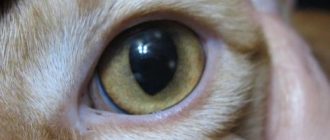If you keep a healthy thoroughbred cat and are going to have it breed, you will need to spend some time studying process before getting down to business. To you as responsible to the owner, it’s important to establish if in fact at least some demand for kittens of this species, in order to avoid an increase and without an ever-growing population of cats, because you don’t are going to breed kittens just to become a witness miracles of birth.

Even if you find that you can easily find owners for your future kittens, cat breeding – this is not the case where should hurry. As with finding the right father for your potential new kittens, you will need to spend significantly amount of time to determine if your cat will breed appropriate in terms of her age, health and lifestyle. You you also need to make sure that you take proper care about your cat during pregnancy and adapt to her changing needs.
The period of pregnancy (the period between conception and birth) lasts for cats are usually around 63 days old, although some breeds such like Siamese, it can last several days longer. As in in the case of human birth, cats do not have a tight schedule, so you should be prepared for a potential difference of several days that the cat will give birth sooner or later.
Here you will find your cat’s pregnancy calendar from conception and before birth, from week to week.
1 week: days 1-7
Contents
At the very beginning of your cat’s pregnancy, after mating and fertilization, for a couple of weeks you cannot be sure that she is really pregnant. However if your cat prolific had contact with the cat, it is very likely that the kittens are still conceived. Cats can carry kittens even from several males if they come in contact with more than one cat at the approximate time of conception! During the first week after mating, the male’s sperm will reach and fertilize the egg cats, which, in turn, will begin to move in the womb, where and the remainder of the pregnancy will develop.
2 week: days 8-14
At the beginning of the second week, fertilized eggs moving in the uterus is implanted (immersed) in it and, thereby, the process will begin development and growth of kittens.
3 and 4 weeks: days 15-28
During the third week, the implanted embryos begin to develop their organs, which causes a surge in hormones in the pregnant cat. During this period, you may also notice that the cat’s nipples may darken and swell somewhat.
In the third or fourth week, your cat may begin to suffer from nausea, as a result of which it can refuse the usual food, and can also lead to vomiting, not necessarily in in the morning! This is completely normal, but if vomiting going on and going hard, it would be better to consult with by the veterinarian. Your veterinarian will be able to confirm pregnancy with ultrasound scan approximately 18 days after conception. At the end of the fourth week, the veterinarian should be able to palpate the stomach and finally confirm the pregnancy by hand, if at this point you have not undergone an ultrasound.
After the fourth week, you should not raise your pregnant cat, as this can harm kittens.
5 week: days 29-35
In the fifth week, an experienced breeder or veterinarian will be able to probe kittens through the stomach, and can even tell you how many of them bears up.
6 week: days 36-42
The sixth week of pregnancy is the period when you notice a significant increase in your cat’s appetite, she will begin to eat “in reserve”, as she will feed the kittens. Let your the cat has as much food as she wants and make sure she eats quality and wholesome food.
Also, at this time, you will be able to see and feel the movement kittens in a cat’s stomach.
7 week: days 43-49
By the seventh week, your cat’s pregnancy will be very obvious, and the cat will have a very rounded look!
8 week: days 50-56
In the eighth week you can clearly feel the kittens in the stomach. Your cat’s nipples will become large and bulging, and the cat itself will be spend a lot of time taking care of yourself. She can start shed hair on the stomach, which is a natural process, which sometimes accompanies pregnancy and is not a reason for worries. Her fur will grow back as soon as she gives birth! Her appetite at this point may decrease slightly, as growing kittens will reduce the capacity of the abdomen. Your cat will also start looking a suitable nesting place, so you should help her in this, an ordinary box or basket – will be quite suitable in places.
About a week before the birth, your cat may start milk stands out and you can even see it at the tips nipple, this means that the cat’s body is getting ready for birth and feeding future kittens.
Week 9: days 57-63
Growing kittens will continue to grow in size, while Your cat may show slight discharge from the vulva, which may also have a reddish tint. At this time you must be ready for childbirth at any time! If your cat shows concern, seeks solace, or settles in for a long time box for nesting, this means that the birth is already very close!
10th week: days 64 onwards
If your cat’s pregnancy lasts for a tenth week, you expect delivery any day. Some breeds of cats, especially Siamese, give birth, as a rule, not earlier than the tenth week. However, if by the end of the week you still have not seen any signs of approaching childbirth, you should consult with your veterinarian and make sure that everything is in order with the cat.






